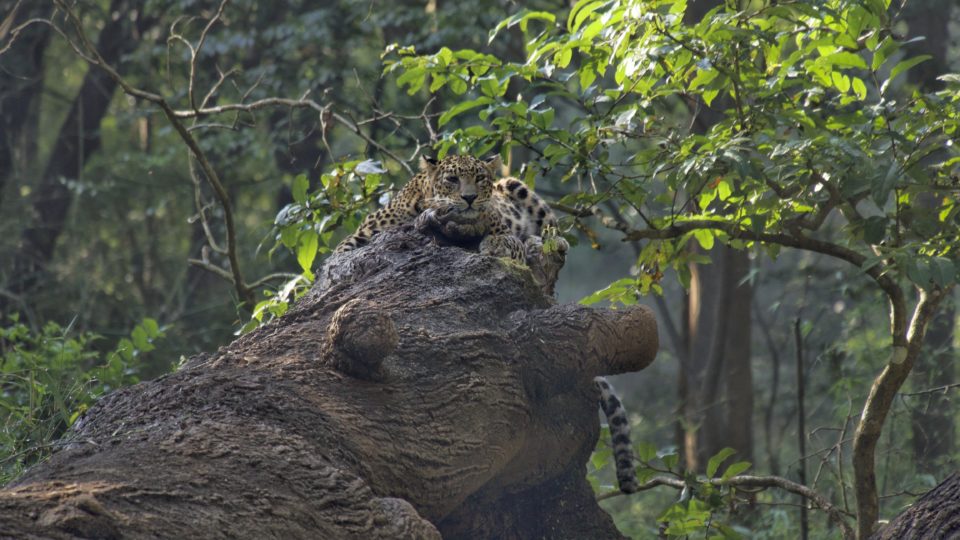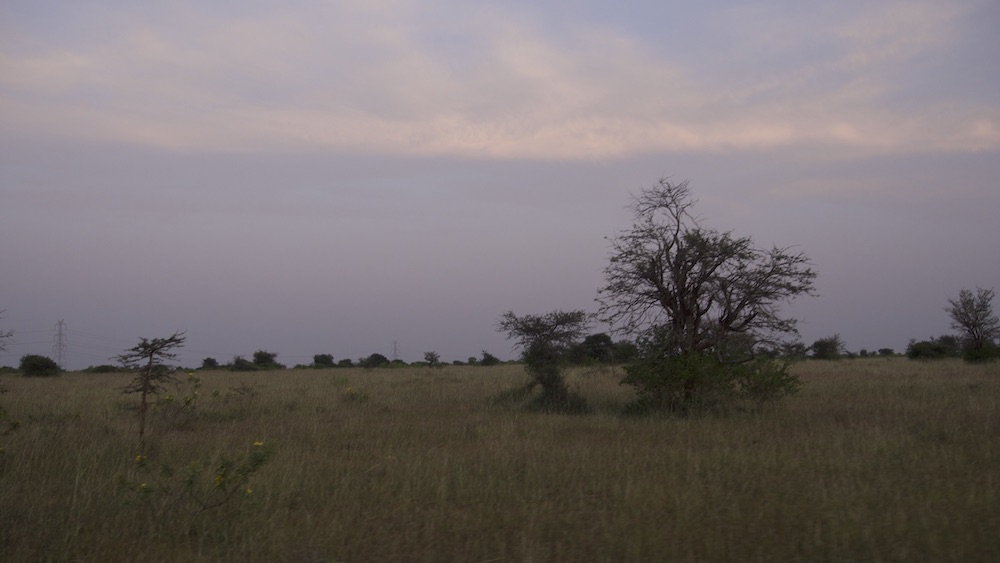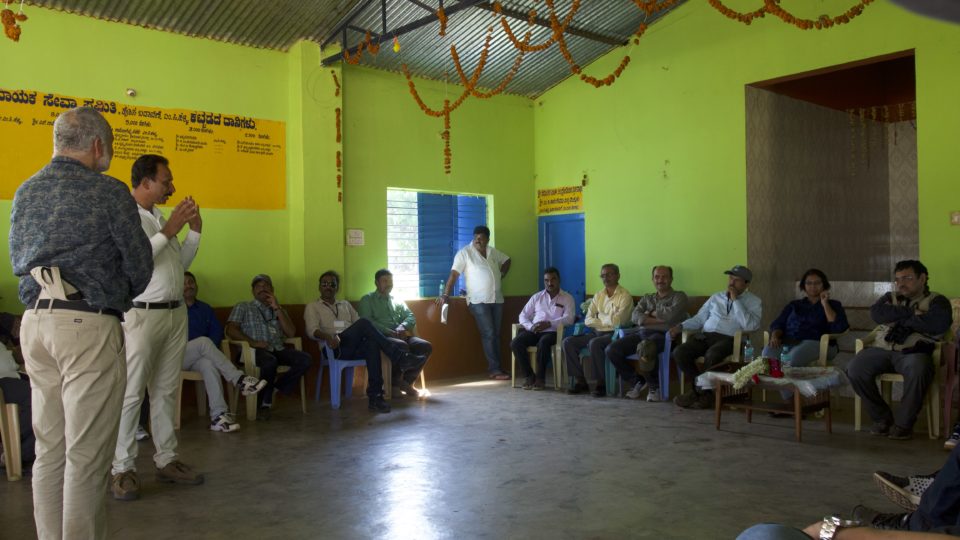
Leopard sighting during morning jungle safari at Bhadra Wildlife Sanctuary © Pradeep Hegde
As part of the training for IFS officers, the participants were taken around the Bhadra landscape to understand the conservation context of the relocation. They went around the Lakkavalli range of Bhadra Tiger Reserve to see some of the flora and fauna in the landscape. Elephants, gaurs, sambar, cheetal, leopard, muntjac, flying squirrel, langur and mongoose were sighted while Crested serpent eagle, Indian peafowl, brown fish owl, pied kingfisher, Malabar pied hornbill, Blue tailed bee-eaters and turtle doves were some of the birds seen. A boat ride in the reservoir backwaters showed up many birds ranging from Ospreys, Brahminy kite, black-capped kingfisher, Black-crowned night heron, Wood sandpiper, Red-watted lapwing, Little ringed plover, etc. They saw the young bamboo recovering all over the landscape following the flowering five years ago. The dense foliage was proof that the forest was in good condition.

The participants visited Basur Kaval Community Conservation Reserve, forest and grasslands stretching across 1800 acres and home to endangered animals like blackbuck, wolf, Indian fox and many rare species of birds like Rock bush quail, Indian Courser, Yellow-wattled lapwing, Large grey babbler, Grey-eared owl, etc. Initially marked as grazing land for the Amruthmahal breed of cattle, it was declared a community conservation reserve in 2011.

Following presentations on the relocation project by Yatish Kumar, DCF Karnataka Forest Department, Gopalakrishne Gowda IAS (R) , D V Girish the founder-member of WildCat-C, Prakriti Srivastava IFS, Country Director WCS-India and others, the participating officers were taken to the site of rehabilitation at M C Halli where they met and interacted with the residents.
Some of the people living at the settlement had gathered to welcome the visitors; they shared some of their initial apprehensions and how these were allayed. Moideen, who earlier lived in Hipla village inside Bhadra Tiger Reserve, spoke how relocation had been a long-promised but evasive dream which began to look possible once DCF Yatish took over. With roads and provision of water, the people began to believe the authorities, he said. "We got relief from the wildlife and they got relief from us," was the way he put it.
Like him, the others too joined to praise the trio -- Yatish Kumar, Gopalkrishne Gowda and D V Girish -- who made the relocation possible. Some suggestions were that during the process the nodal officers should not be transferred, and that relocated people need to be hand-held for some time after relocation.

This was followed the next day by a drive along the Kemmangundi-Muthodi road allowing a view of the resplendent forests, sholas and grassy peaks. It culminated in a visit to the Muthodi and Hebbe ranges of BTR from where the villages of Hebbe and Hipla had been located. The visit provided a good overview of the difficulties the people faced living inside the remote parts of the forest with no health, education or transport facilities. The anti-poaching camp at Hebbe which hosted the lunch for the team talked about recent sightings of wildlife including tiger and leopard. The erstwhile paddy fields of the villages have become grazing ground for ungulates like chital.
The day concluded with a visit to the world’s first certified wildlife-friendly coffee estate owned by Shreedev Hulikere. Shreedev took the officers around the estate to explain some of the sustainable and wildlife-friendly practices. Coffee estates are an inalienable part of the Bhadra landscape and some of the estate owners have been attempting to build tolerance of wildlife among the plantation farmers.